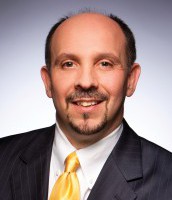We have a saying at Lumina Foundation that’s become something of a mantra: “It’s all about the learning.”
This mantra isn’t a quip about our own penchant for trial and error (though there’s a fair bit of that here, as there is in any organization). No, when we say: “It’s about the learning,” we’re stating a core commitment, a belief that educational quality shouldn’t be measured by a list of courses taken or grades earned or even the time students spend in classrooms. Rather, we believe quality should be measured by what students actually learn – by the specific knowledge and skills they gain through their programs.
This sort of competency-based approach might seem logical – perhaps even self-evident. But in reality, it’s much more the exception than the rule. Fortunately, that’s changing. In fact, one of Lumina’s goals is that all credentialing be competency-based.
One way to move in that direction is to shine a very bright light on postsecondary institutions that are going all-in – those that are designing programs to be fully competency-based from the ground up. This issue of Focus shows how powerful such an approach can be, especially for students from varied backgrounds and with a wide array of learning needs.
 An October 2016 study by rpk GROUP notes significant growth in “all-in” competency-based education, pointing out that hundreds of institutions are developing such programs. The study, which focuses on emerging programs at four institutions – public and private, two-year and four-year, nonprofit and for-profit – doesn’t gloss over the challenges inherent in developing competency-based programs. For instance, it points out that such programs typically require substantial upfront investment, and that they rely on economies of scale and efficiencies in the creation and delivery of learning modules to keep prices lower than comparable credit-hour programs.
An October 2016 study by rpk GROUP notes significant growth in “all-in” competency-based education, pointing out that hundreds of institutions are developing such programs. The study, which focuses on emerging programs at four institutions – public and private, two-year and four-year, nonprofit and for-profit – doesn’t gloss over the challenges inherent in developing competency-based programs. For instance, it points out that such programs typically require substantial upfront investment, and that they rely on economies of scale and efficiencies in the creation and delivery of learning modules to keep prices lower than comparable credit-hour programs.
Admittedly, it won’t be easy to make competency-based education programs widely available. But such programs, when taken to full scale, show tremendous promise. They offer an exciting new way to serve many students who seek clearer pathways and alternatives to the regular classroom. And, they have much to “teach” others in more traditional, time-based programs.
Also, through the Competency-Based Education Network, an independent nonprofit organization, Lumina is working with educators to ensure they design programs that produce outcomes that are racially and economically just. We must do better by African-American, Hispanic, and American Indian students, and competency-based learning can help address the nation’s equity imperative.
Increasing innovation and urgency in the competency-based movement is among five national priorities that Lumina Foundation outlines in its strategic plan. The four-year plan, which took effect this year, continues to advocate a level of postsecondary attainment – 60 percent by 2025 – that will benefit many Americans whose needs might otherwise go unmet.
Over time, the success of competency-based programs will hinge on how well colleges and universities explain how this approach can support a broader array of today’s students.
In this issue of Focus, we talk to some of those students, individuals enrolled in programs at three very different institutions – a large public university; a small, private liberal-arts college; and a tech-focused community college. The institutions are diverse – as are the students they serve – but the programs offer students several common characteristics, including coaching and mentoring, meaningful interaction with instructors, and rigorous assessment of learning with a follow-up that includes in-person and IT-enabled developmental feedback.
Competency-based education programs often “look different” to students, parents, and hiring managers. There may be no grades, and students often have flexibility in how they approach coursework – if courses are even used to structure learning. Some explanation of competency-based education is usually needed to help stakeholders understand how learning occurs in active, supportive environments.
Also, growing these programs will require policy and funding environments at the federal and state levels that permit – even encourage – new thinking. This new thinking includes all of the following:
Alternatives are needed to standard definitions of “satisfactory academic progress” and other time-based measures.
Transfer agreements must be configured so that they are based on students’ attainment of specific learning objectives rather than the accumulation of credit hours.
Approval processes must be adopted that do not place unfair burdens on competency-based education programs merely because they look different.
Outcomes-based funding, which can increase the likelihood that students finish their programs on time, should be structured in ways that encourage competency-based education.
Schools should be able to charge tuition for these programs at flat rates or by the competency or sets of knowledge and skills that students have mastered.
Higher-ed innovators have an important role in helping people who can make or break these programs – everyone from faculty members, students, and parents to employers, regulators, and policymakers – understand how competency-based approaches can deliver high-quality education.
It’s our hope that this issue of Focus can help foster that understanding.

Jamie P. Merisotis
President and CEO
